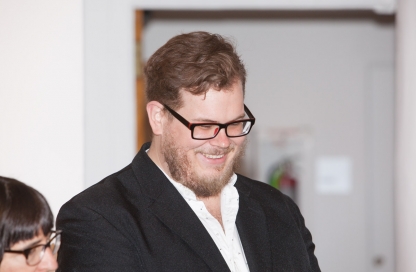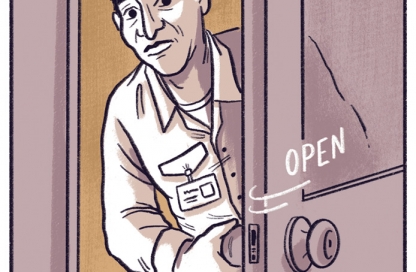Best Sites by Artists and Writers #4: Amanda Palmer
Ever since my days at Sony, people have teased me for analyzing websites in depth. “What does the header tell you about her soul, Ben?” But the fact is that building a website requires the kind of attention to detail (and soul-searching) that my explorations uncover.
Case in point, Amanda Palmer.
Amanda Palmer is a talented musician, a controversial performer and a brilliant marketer. She’s embraced the web for longer than most artists, and in the process she’s built a community of fans that’s the envy of many.
Palmer believes in asking for help. It’s been a part of her identity and her career since she was a street performer. When her music career began to take off, she preserved her philosophy of asking for help to make a living. That upsets a lot of artists, not just musicians.
Why?
Her own mission statement says it best:
DEAR DOWNLOADER of MUSIC,
this store is built on a “pay what you want” philosophy for my digital music.
i firmly believe in music being as free as possible. unlocked. shared and spread.
i believe that in order for artists to survive and create, their audiences need to step up and directly support them.
honor system.
no judgment.
if you’re broke – take it. if you love it, come back and kick in later when you have the money.
if you’re rich, think about who you might be karmically covering if you really love this record.
once you have it, SHARE SHARE SHARE! COPY COPY COPY! SPREAD THE EVIL!!!
we are the media.
I also release all of my music and writing using the Creative Commons “Attribution-NonCommercial-ShareAlike (CC BY-NC-SA)” license. If you want to understand what this means, google Creative Commons.
That’s controversial. Especially if you’re an artist who’s trying to make a living selling your work! Many ask, “Is this really a sustainable business model for the independent creative person?” Certainly not for many. But the more time passes, the more prescient her philosophy appears. The question, “Should I charge a buck or give it away for free?” is penetrating every corner of the arts. It’s starting to look like the creators who understand the kindness of strangers are the ones with the best chance to make it.
So how does Palmer’s site reflect her brand? How does she use it to convey who she is and what she does?
Let’s dig in a little.
She chose the standard blog format — a header above with a long list of posts below (with infinite scroll). This choice is a good one because she’s a prolific artist and also has a lot going on in her life that her fans find interesting.
The right rail shows her priorities. That’s the thing about right rails, they always show our priorities! Keep that in mind when building your own site.
What are her priorities, exactly?
1) Merchandise: She’s an artist who wants to make money by doing her art, so the merch is first.
2) News: She wants her community, who probably owns her latest work, to feel engaged with the site. Showing the latest post in an obvious place is smart.
3) Support: Here’s the general call-to-support that was discussed above. She’s not asking us to pay for merchandise specifically. She’s wrapping the work she does, the art she sells and her persona into one general plea. It’s smart. Because if you like what she’s doing then that may be enough impetus for you to support her.
The fact that she makes this the 3rd element on the right rail (a prime piece of real estate on the web) is telling. Imagine if the Support Me! link was #1 on the list. That would look pushy, wouldn’t it? But the 1-2-3 punch of Sell-Tell-Support fits Palmer’s brand perfectly.
The header is another example of her priorities, but with less of an impact. She breaks News and Blog up because she wants the blog to be a place for personal posts. Personally, I think she could get more impact by combining news and personal posts since she’s such a public persona. There are, no doubt, personal dynamics that factor into this decision.
The most telling design element in the header is the Mission Statement button. While it’s last in the order, it’s also the only one with the graphic treatment. Again, she’s putting the core of what she does in an obvious, but not obnoxious place. She knows the taboo around the idea of asking for help, and she treats our fear of it with due respect.
Palmer’s site is a reflection of who she is. Her philosophy of asking for support weaves its way through the online experience — always present, never intrusive. All 21st century artists should study her delicate approach. We don’t have to copy it, but we’d do well to understand it.


